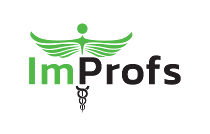Scrum software development
Developing Software Using Scrum Method using Microsoft In modern software development, the choice of development method and associated tools plays a crucial role. Scrum, a popular Agile methodology, provides a structured approach to responding quickly and flexibly to changing customer needs. Combined with Microsoft’s tools, such as the Scrum Process Template from Microsoft Team Foundation Server (TFS), Scrum can be applied even more effectively.
The following is an overview of how Scrum works and how Microsoft tools support this process. What is Scrum? Scrum is an Agile methodology that focuses on collaboration, flexibility and rapid iterations. At the heart of Scrum are “sprints,” short, fixed time periods in which a multidisciplinary team works to deliver a functional product. The Methodology of Scrum
1. Sprints: Periods of 1-4 weeks in which a team develops and delivers a particular part of functionality.
2. Sprint Planning Meeting: The team decides which features will be developed in the next sprint. These are documented in the “sprint backlog.”
3. Daily Scrum: A daily meeting in which team members answer three questions:
– What did you do yesterday?
– What are you going to do today?
– Are there any obstacles?
4. Sprint Review: A review at the end of the sprint in which the team presents the delivered product to the customer and receives feedback.
5. Sprint Retrospective: A meeting after each sprint in which the team discusses what went well and what can be improved. Roles within Scrum
– Scrum master: Facilitates the team, ensures adherence to Scrum rules and helps remove obstacles.
– Product Owner: Represents the customer and determines backlog priorities.
– Development Team: A self-managing and multidisciplinary team responsible for the execution of tasks. Scrum Process Template from Microsoft Team Foundation Server Microsoft Team Foundation Server (TFS) provides a powerful toolset to support Scrum processes.
The Scrum Process Template in TFS includes the following features:
1. Scrumboard: A digital board that visually displays tasks in different columns such as to-do, in progress, test and done.
2. Backlog Management: Management of the product backlog and sprint backlog, where tasks can be added, prioritized and assigned.
3. Burndown Charts: Charts that visually display the progress of the sprint, giving the team insight into remaining efforts.
4. Reports: Various reporting options to monitor progress and inform stakeholders.
5. Integration: Seamless integration with other Microsoft tools such as Visual Studio, Azure DevOps and GitHub, further enhancing the development experience. Benefits of Using TFS for Scrum
– Transparency: The entire team has continuous insight into progress and task distribution, which promotes collaboration.
– Efficiency: Digitization of the scrum board and automated reporting allows the team to work more efficiently.
– Communication: Improves communication between the team and external stakeholders such as the client, thanks to real-time updates and reports.
– Flexibility: Supports rapid adjustments in schedule and priorities, which is essential in an Agile environment.
Conclusion Scrum, supported by Microsoft Team Foundation Server tools, provides a structured and flexible approach to software development. By combining effective methodology and powerful software tools, a development team can better respond to changing customer needs and deliver high-quality software faster. Using the Scrum Process Template in TFS helps improve communication, transparency and efficiency within the team and with the customer, significantly increasing the likelihood of success.
Contact us for more information! Email info@improfs.nl or use the comment form below.






